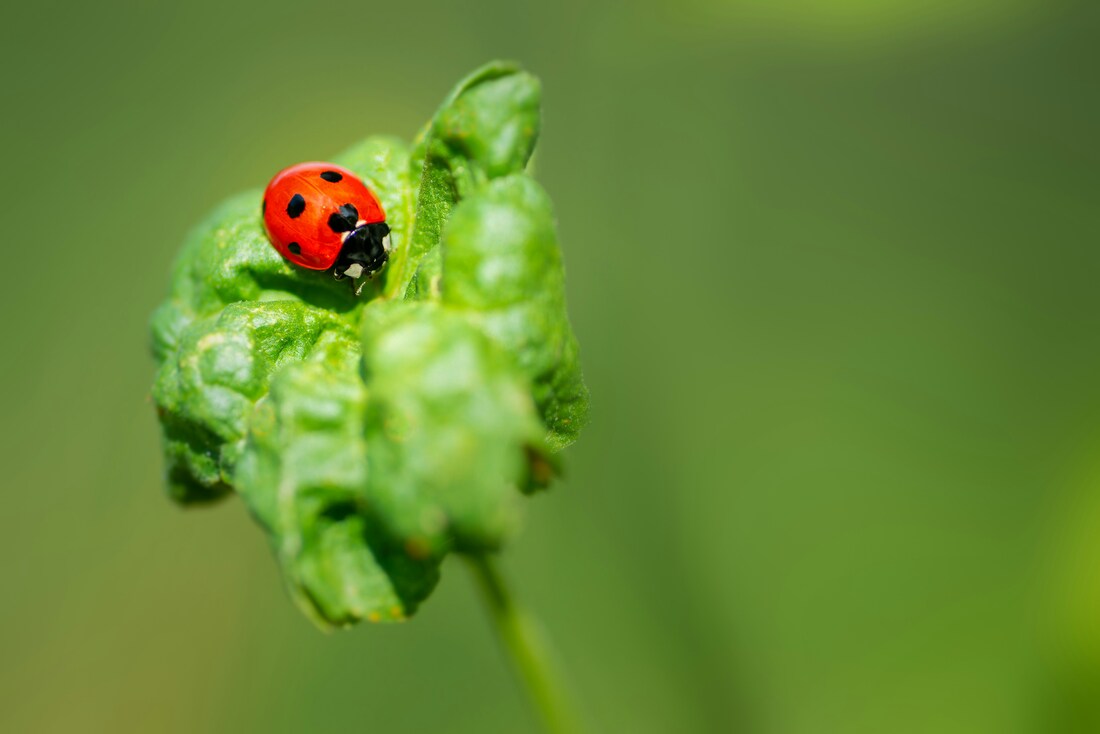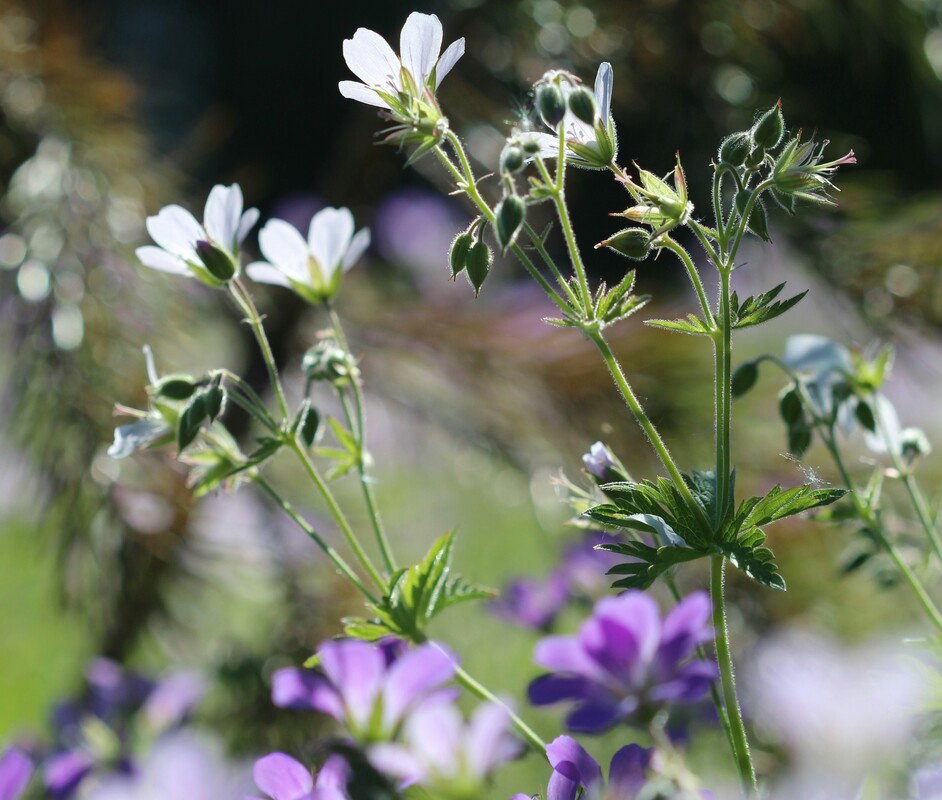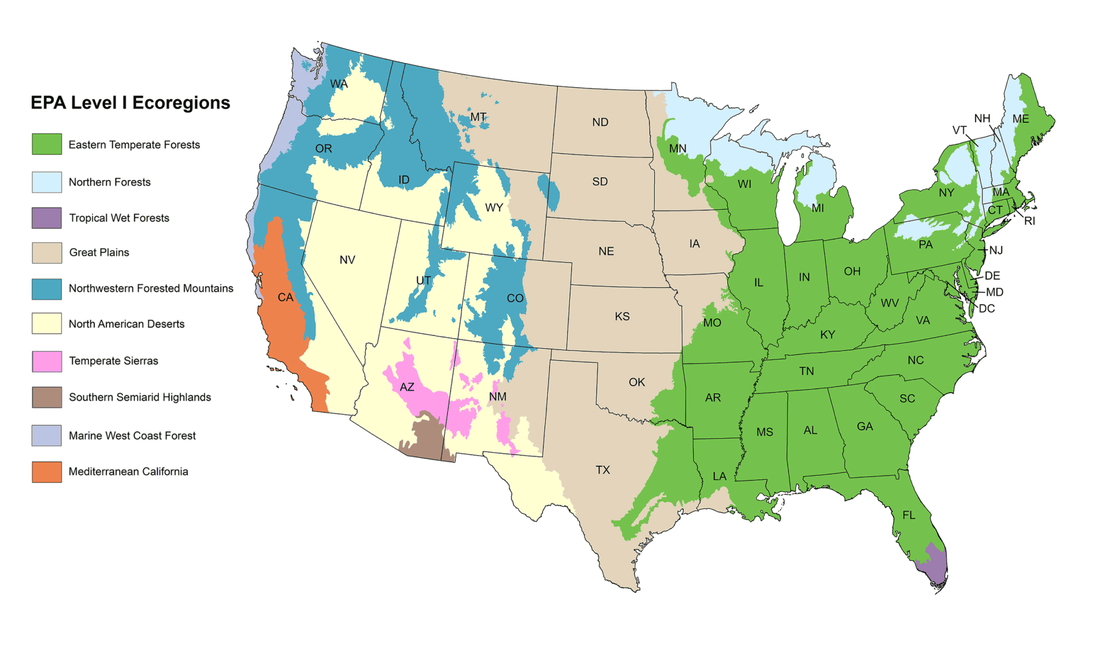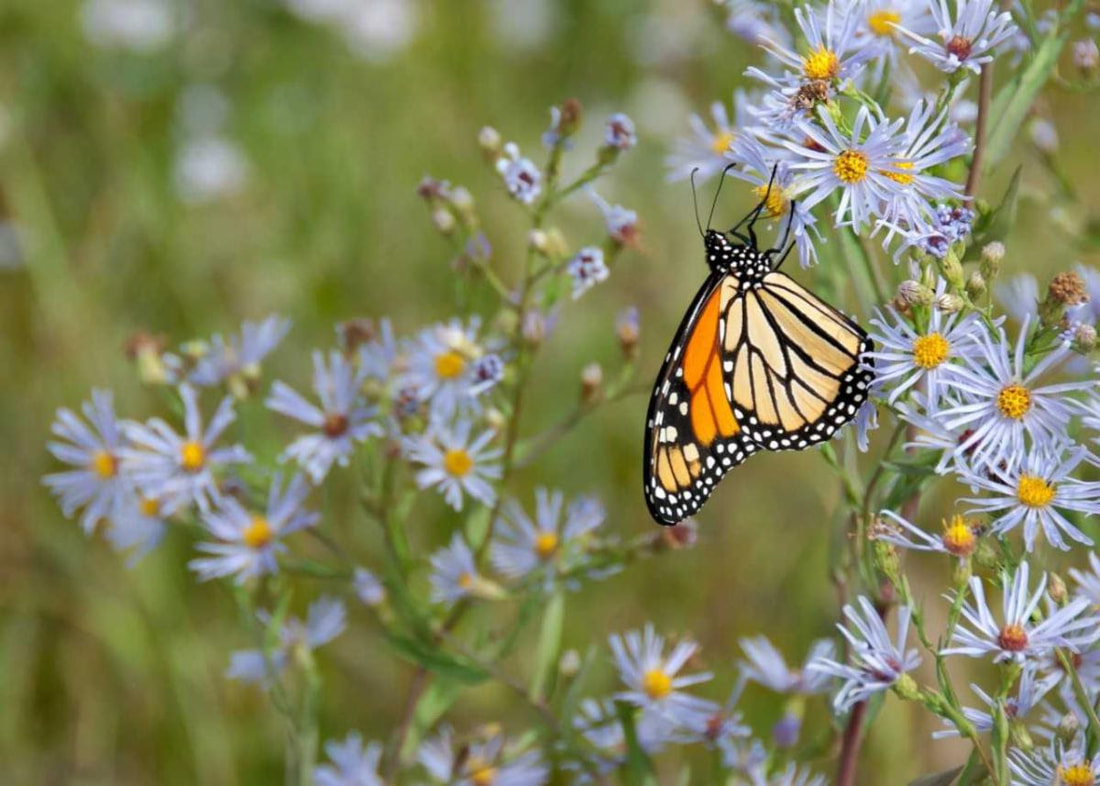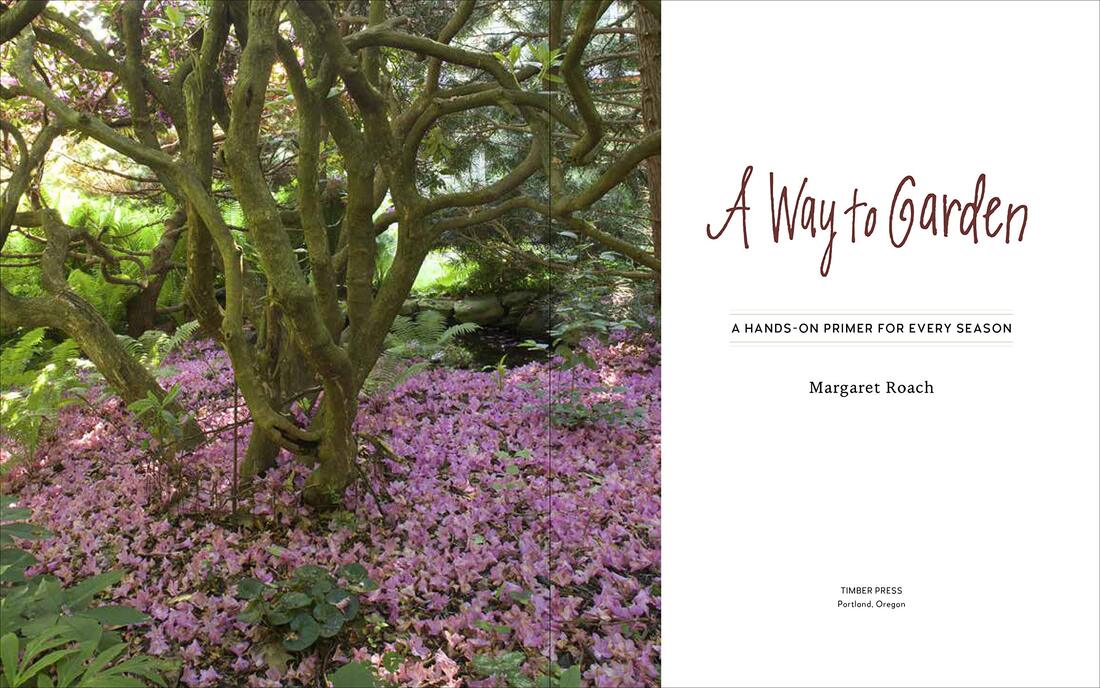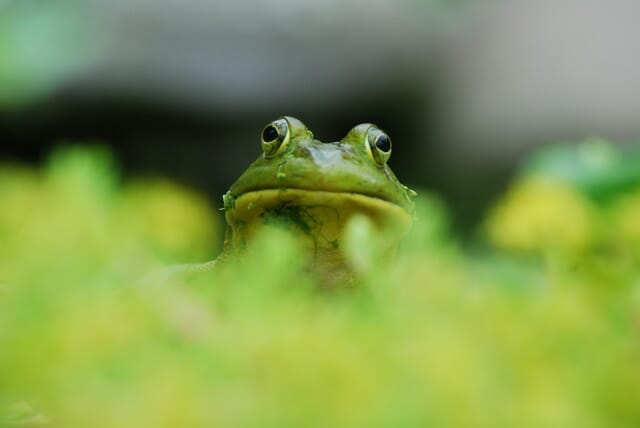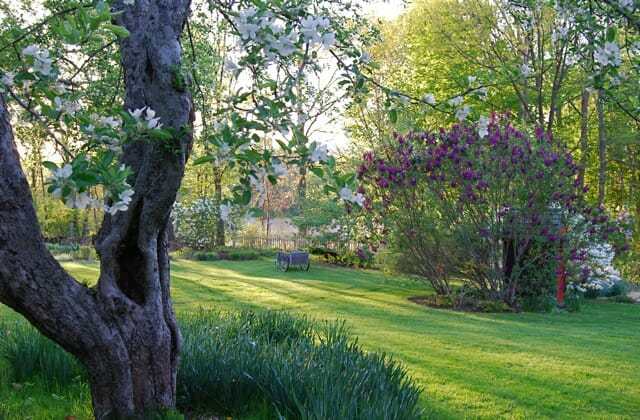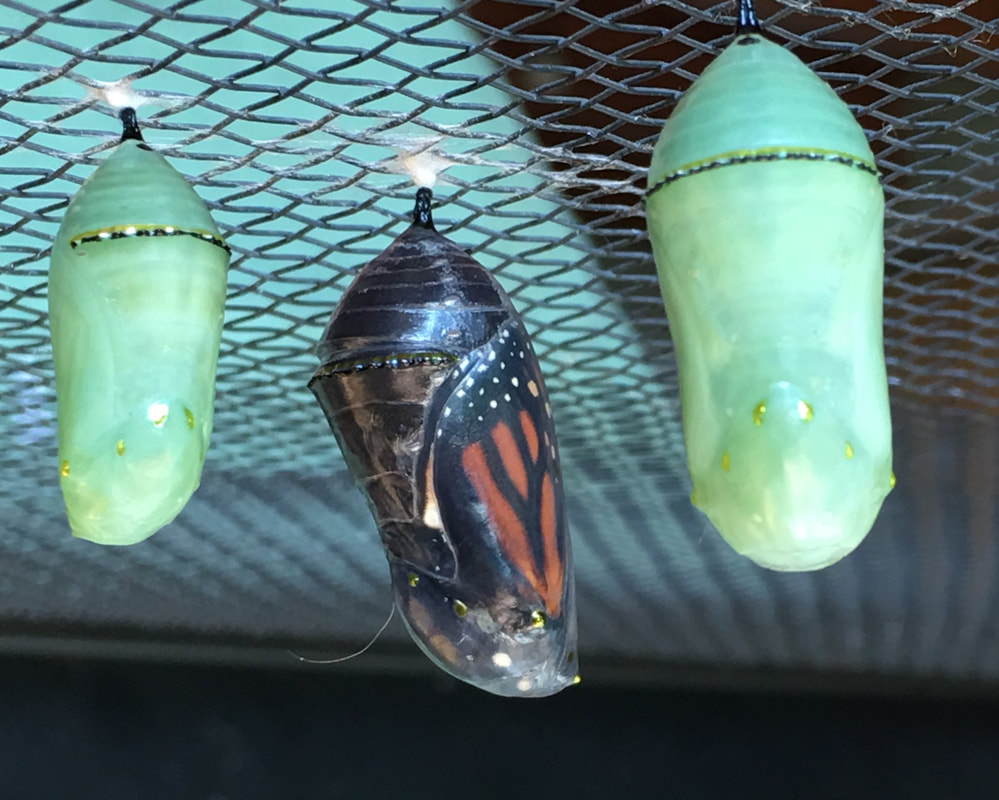|
It's "the little things that run the world”. - EO Wilson
Life as we know it depends on insects. They are the foundation of the food web in our ecosystems, particularly in our gardens. Insects pollinate flowers and maintain soil structure, but they also munch on our cabbage and attack other desirable plants in the garden and landscape. When we see damage done to our plants, our first instinct may be to apply whatever product will kill the insect quickly in order to save the plant. But nature already has a remedy. In a healthy ecosystem, damaging insects or “pests” are controlled by insect-eating birds, frogs, and other animals. There are also insects that eat other insects. We call these beneficial insects. Beneficials (the good bugs) help us in two ways: either they prey on other insects (the bad bugs) or they parasitize them by laying their eggs in or on them so their larvae can feed on and kill the pest. Ladybugs, lacewings, and predatory wasps are commonly-known beneficials. Instead of ordering them from a gardening catalog, we can attract these and other good bugs to our yards. Here are six ways:
Here’s one final thought. If a plant is struggling and continually susceptible to pests, perhaps it is the wrong plant for in that spot. It may not be suitable for that location or even your ecoregion. Maybe the best thing to do is remove it and replace it with a plant that is better suited to the site - like natives! Next week we will focus on using natural fertilizers. Also, mark your calendars for Saturday, March 23. Naturalist, Beth Goeppinger will be here at BGC presenting ‘Planning Your Native Landscape’. Until then, check out the links below to learn more. LINKS: What is Ecological Gardening? Homegrown National Parks Native Plant Finder
0 Comments
Soil is the foundation of all the plants you grow. If your soil is healthy, your plants are healthy. Why is that? Soil is alive with thousands of microorganisms that are working to keep nutrients available for your plants at the root level. If soil is left uncovered, those microorganisms can be exposed to sunlight, the top layer of soil can erode away, leaving plants at a disadvantage without a layer of insulation.
So we mulch. We have yards of hardwood mulch applied every year, and while this is a widely-accepted practice, there are better options that benefit the plants, the pollinators, and you. In ecological gardening, we are trying to mimic what nature does and restore wildlife habitats. In a natural ecosystem, you will rarely find exposed soil. Typically there is a layer of leaf litter that naturally falls, and within that layer are beneficial insects and their eggs that overwinter. ‘Leave the leaves’ has been a recent campaign by conservationists, and it makes sense. Not only do leaves help suppress weed seeds, but they nourish the soil as they break down and provide habitat for wildlife. Another option is a living mulch. Using plants as a mulch has many benefits - one of them is less weeding. When the right perennials are planted closely together, they will cover exposed soil and crowd out weeds. There are wonderful grouncovers that can be used as mulch as they weave in and around perennials and shrubs. In keeping with the last article ‘Grow the Right Plants’, we want to make thoughtful choices taking into consideration not only aesthetics, but also benefits to pollinators and plant communities. Introducing matrix plantings. A matrix is a design concept that originated in Germany following WWII. In it’s simplest form, a low-growing perennial is used as a groundcover, then taller perennials with similar cultural needs are planted among the groundcover to offer seasonal interest. Plants are carefully chosen based on their plant growth so they will knit together and form a cooperative ecosystem. Sedges (Carex) are commonly used as the matrix base layer. Other options include low-growing hardy geraniums (Geranium sanguineum), and lambs’ ear (Stachys byzantina) for sun, wild ginger (Asaram canadense) for shade. If you want to learn more about matrix planting design, click here. Learn more about sedges here. Living mulches can also be edible whether in an ornamental landscape or the vegetable garden. Wild strawberries (Fragaria virginiana) and herbs are good examples commonly used in permaculture. Learn more about permaculture here. The possibilities of living mulches are many and fun to explore. Next week we will focus on attracting beneficial insects. Also, watch for an opportunity to continue the conversation in person here at Burlington Garden Center coming soon. Until then, check out the links below to learn more. LINKS: What is Ecological Gardening Homegrown National Parks Native Plant Finder Ecological gardening is a new way to think about gardening. At its core, it strives to mimic and restore our local ecosystems. It’s the art of growing gardens that are suited to our area. It’s also a different way to choose plants that we grow. Instead of selecting plants that only please us, it’s intentionally seeking plants that will support wildlife that already lives in our ecosystem, sustaining it through the four seasons.
So what is an ecoregion? Simply put, an ecoregion is a large area of land containing distinct characteristics allowing natural communities and species to grow. According to the map above, we are in the Eastern Temperate Forest ecoregion which covers quite a large area of the country. Because this ecoregion covers so many states and different hardiness zones, it is broken down into smaller eco regions. Click here to see this map. We are in Level III ecoregion 53, and to be more specific, Level IV 53b. Totally confused? Keep reading. Why garden by ecoregion? Plants are not bound by state lines when it comes to their natural habitats. Using ecoregions as a guide, we can make smarter plant choices. Not only will these native plants have a better success rate, better plant health, and better performance, they will support our local wildlife. The goal in gardening ecologically is to garden with plants best adapted to our locale and the wildlife that is here. If you’d like to read more on this topic, here is an interesting blog post by Doug Tallamy. Next week we will focus on growing the right plants for our spaces, and our series will continue each week addressing the following ecological practices:
Watch for an opportunity to continue the conversation in person here at Burlington Garden Center coming soon. 1/22/2024 0 Comments Intro to Ecological GardeningDo you long for a garden that requires less maintenance, less water, and no chemicals? Do you also want a garden that supports pollinators, wildflowers, more biodiversity and healthier soil?
Ecological gardening may be the answer. It’s been the buzz word as the latest trend, but ecological gardening is not just a trend. It is a way to garden responsibly and intentionally that is becoming a way of life. What exactly is it? Ecological gardening strives to mimic and restore our local ecosystems. It’s the art of growing gardens that are suited to our area. It’s also a different way of thinking. Instead of choosing plants that only please you, it’s intentionally selecting plants that will support wildlife that already lives in our ecosystem, sustaining it through the four seasons. If you’ve read any books by Doug Tallamy, you already know some of the principles and practices of this type of gardening. If you haven’t read them, it’s worth your time to read “Bringing Nature Home” and “Nature’s Best Hope”. Copies will be available for purchase this weekend. We’ll be digging into the five practices of ecological gardening over the next few weeks here in the newsletter.
Watch for an opportunity to continue the conversation in person here at Burlington Garden Center coming soon. 2/24/2020 0 Comments Book Review: A Way to Garden Conception. Birth. Youth. Adulthood. Senescence. Death & Afterlife. These stages of life that we experience are used in Margaret Roach's book to describe a plant's life cycle through the year. That in itself tells the reader this is a very special book. First published in 1998, this updated edition contains new information. Following are examples of her breadth of garden wisdom. CONCEPTION: In this first chapter of A Way to Garden, Margaret tackles two topics that can be intimidating to the gardener: scientific names and pruning. Her tips on keeping deer away will empower you to finally take the necessary action to keep deer out of your yard. One of my favorite design tips she shares is to think early, middle, late when placing online orders. For example, if you are buying a lilac, do your homework and order three varieties with overlapping bloom times to extend that captivating season of fragrance. BIRTH: The earth begins to awaken in March and April, and it starts indoors with seeds. An extensive seed-starting schedule and tips will answer questions that you may have. And it is here that we learn of Margaret's obsession with gold foliage and the red spring-flowering Pulmonaria rubra. She takes the mystery out of pruning Hydrangea and Clematis, and suggests alternatives to Forsythia. I whole-heartedly agree with her encouragement to learn to ID weeds. 'I do not think we have a prayer of subduing or at least outsmarting an opponent we are barely acquainted with.' One of her go-to websites is the University of California weed ID. You can find it here. YOUTH: The world is in it's youthful stage in May and June when all is fresh, new, and in bloom. Margaret writes of transplanting, self-sowers, and growing tomatoes and potatoes. These are the salad days where there just isn't enough space or time to grow all the wonderful varieties available. Her suggestion is to choose a few and set up a seed trial. Grown side by side, you can observe which ones do best in the conditions in your garden and which appeal most to your taste buds. One to look for: 'Merlot' leaf lettuce. Margaret reminds us that we aren't the only ones interested in what's growing in our gardens - rabbits, deer, and woodchucks often get their fill at our expense. How to tell what's been munching? Look for these clues: deer leave jagged edges, rabbits cut at a clean 45 degree angle. In this chapter, Margaret encourages us to underplant trees with living groundcovers designed in what she calls 'garden mosaics'. Watch the video below to hear her describe this refreshing concept. The year continues through 'A Way to Garden' book in adult, senescence, death and afterlife stages. Each page offers observations, tips, and techniques gathered from years of experience bound together in this garden treasury. 'I garden because I cannot help myself'.
- Margaret Roach If you can relate to that, this book is for you. * - Tracy Hankwitz is a horticulturist, and General Manager of Burlington Garden Center A Field Guide to Raising Butterflies
There is a magical process that takes place starting in late spring through fall in our area. It is the complete metamorphosis of a monarch caterpillar to a butterfly. Looking at the caterpillar, one of the first things that goes through your mind is how does this striped caterpillar become a butterfly? What part of the caterpillar is the wings? Which part is the thorax? Do the legs become wings? It is a wondrous process to witness the transition. When it breaks through the chrysalis and crawls out, the monarch's wings are completely crumpled up. The thorax or body is huge and filled with fluid. It’s first moments as a butterfly are spent pumping fluid from the thorax to fill and expand the wings. You have to be quick to capture the process. After it looks like a typical monarch, it will rest and occasionally flap its wings to dry them. A few years ago, I started collecting monarch eggs or small caterpillars and started bringing them inside. Why would I do that? One more thing to take care of, one more thing to worry about. But if you have heard the news, you know monarch populations have dropped off considerably. We have good years, but overall, there are fewer monarchs. There is a strong statement typically made about monarchs, that they produce a taste that is offensive or toxic to predators. That is true to an extent, but predators get around that sticky issue. First, ants, tree frogs and other predator insects will eat the entire egg. If the monarch survives to hatch, it may still be consumed by those insects and tree frogs. The bluebird has apparently learned how to eliminate the toxic part of the caterpillar so it can be fed to its hatchlings. That leads to the conundrum of who is more important; the bluebird or the monarch? No fear, by bringing the caterpillars inside your home or inside a protected enclosure, the monarch is protected from food predators. But more importantly it protects them from being infected with one of several diseases which also kills the monarch. So what can we do to make it easier for the monarch if you cannot provide them a protected home? Giving them plenty of native plants along with various forms of milkweed is a great way to start. Plants like Joe Pye Weed (Eupatorium or Eutrochium macrolatum), Meadow Blazing Star (Liatris ligulistylis), and Lead Plant (Amorpha canescens) along with many more, will feed your monarch butterfly once it is released. Milkweed or butterfly weed (Asclepias tuberosa) is important for the butterfly to lay eggs, so keep those within an area of your yard. If you find common milkweed too invasive, swamp milkweed(Asclepias incarnata) is an excellent substitute that is native to our area and is less invasive. We still have many monarchs to marvel at as summer slowly wanes. Look for chrysalises on Milkweed plants, watch the butterflies emerge, and make plans to actively raise them next year. Beth Martin is a Master Gardener here at Burlington Garden Center where you will find many plants helpful to the butterfly lifecycle. Feel free to contact Beth at [email protected]. |
|
|
STORE INFO
5205 Mormon Road Burlington, WI 53105 262.763.2153 |

